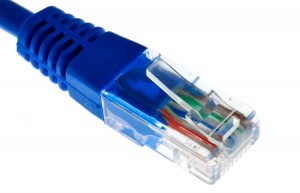IP Clocks – What You Need to Know
Today, clock systems are undergoing many innovative changes in design and functionality. Older systems are becoming obsolete, and the newer, more sophisticated clock systems are now providing the time for new infrastructure and facilities. One system that has gone through rapid advancement is the IP clock system.
The most advanced IP systems work on a Power over Ethernet (PoE) 802.3af Protocol. With the use of PoE, clocks in the system can receive all the power and data in one Ethernet cable, limiting the amount of wire needed run the clock system – thus saving in installation costs. With these systems, each clock receives its time from an NTP/SNTP server, eliminating the requirement of a master clock. Not only does the IP system save money by limiting the amount of wire used for installation, but since there is no need for a master clock, you can eliminate the cost of purchasing one.
Sapling has strived to make the IP clock system designed around one major aspect: control. No matter how many clocks are utilized in a facility, the IP system makes it possible to control each and every clock individually. Users have the ability to monitor the status of each clock, assuring the clock is running on accurate time, observing the strength of its NTP/SNTP time source, and checking other useful diagnostic information about the clocks and the entire system. The IP system also offers a Daylight Saving Time adjustment feature, which eliminates the chore of having to change each individual clock during DST changes. And if the facility requires international time as well, Sapling offers a DST feature that adjusts for both national and international Daylight Saving Time changes.
All of these features and monitoring capabilities of the IP system are accessible through a web interface, making interaction with the clocks a simple task. With this built-in software, all of the aforementioned features are monitored and controlled on any computer connected to the network within the facility. This element of control enables the facility’s clock system to be easily managed and monitored in every aspect.
The IP system is a great choice for many different applications. Most schools, college campuses, hospitals and corporate complexes work off of a central network, so the IP system can directly integrate with existing infrastructure. When choosing a clock system for a new infrastructure, or just to update an existing structure with a more advanced timekeeping solution, the IP system fills all of the requirements.

